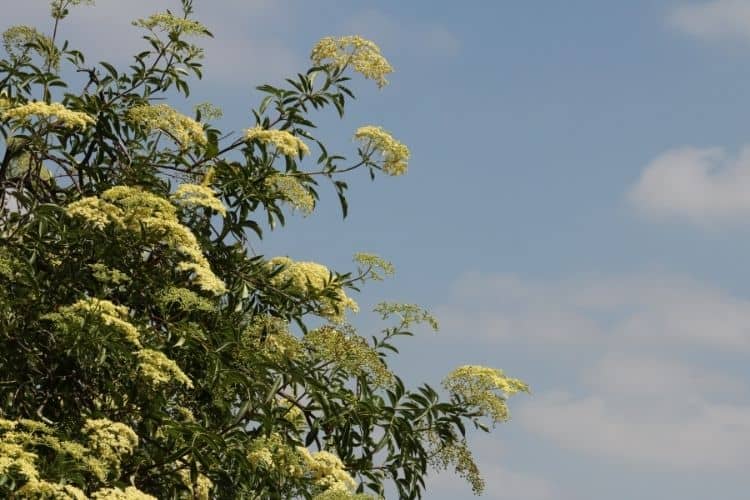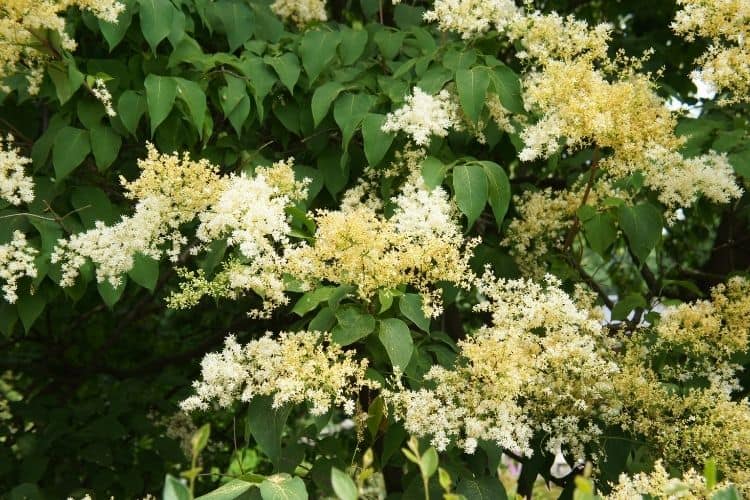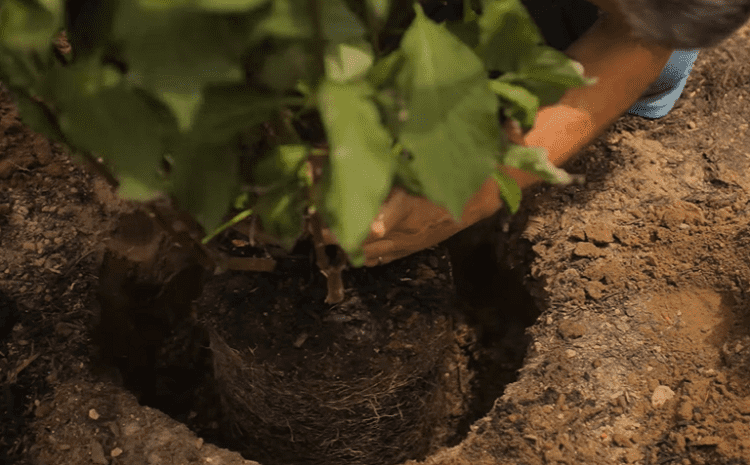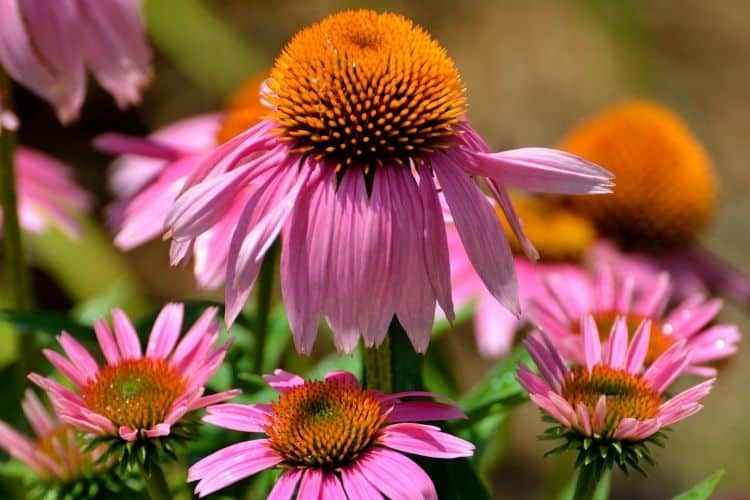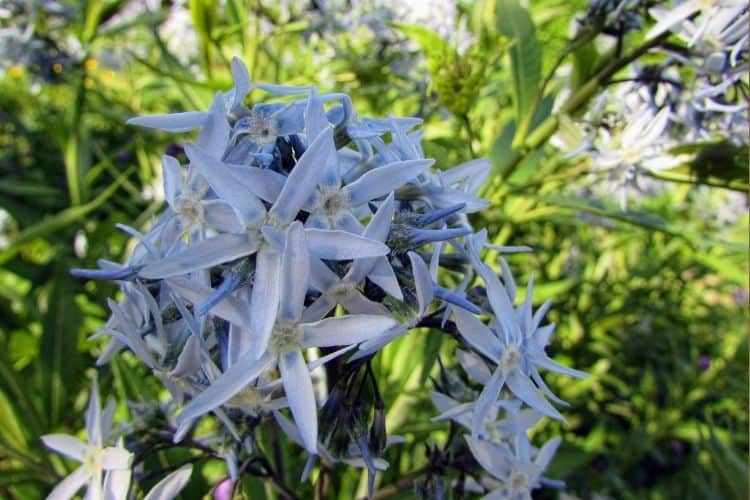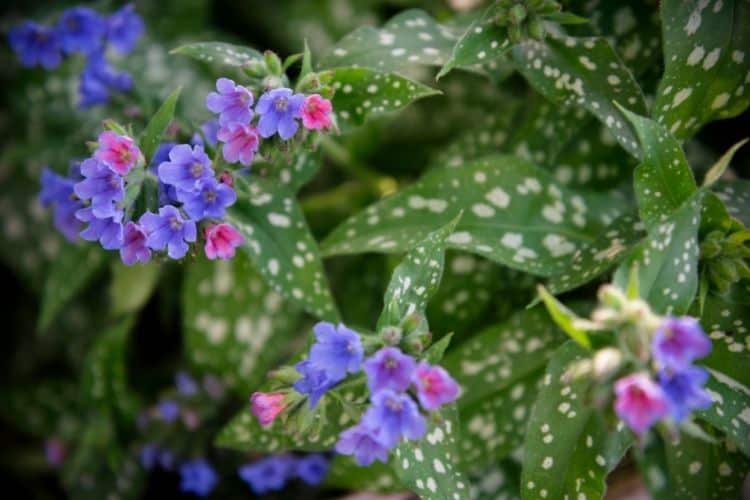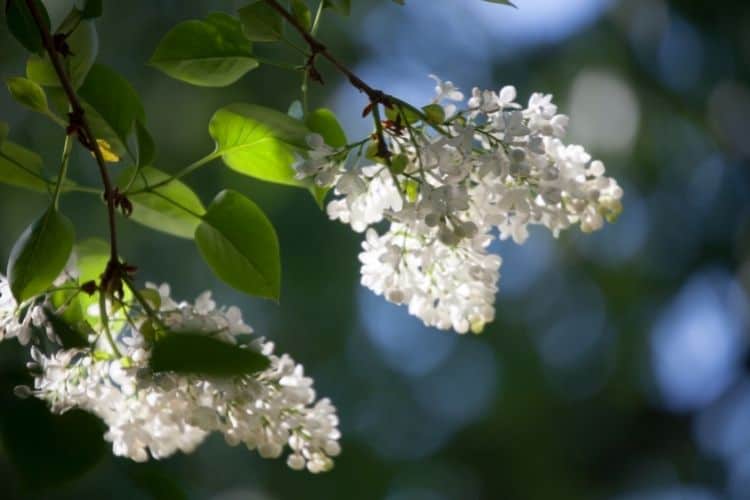- Apricot Tree: Can You Really Grow It On Your Own? - November 29, 2021
- Lavender Tree: How Soon Your Can Expect Your Tree To Grow? - November 2, 2021
- Bottle Brush Tree: Can You Grow It In Your Own Yard? - November 2, 2021
The magnificent flower clusters and impressive size endear the ivory silk lilac tree (Syringa reticulata) to many growers who love the plant’s rounded, large shrub. Ivory silk lilac tree also referred to as ‘ivory silk’ or Japanese tree lilac, is perfect for miniature home landscapes.
The plant has an erect spreading growth habit as a dense multi-stemmed deciduous tree with its average textures blending well into the landscape. And any growers looking for an effective composition can balance it with one or two coarser or finer shrubs or trees.
Growers can prune the ivory silk lilac tree after flowering as the plant is a relatively low-maintenance tree. With that, they can avoid removing the tree’s current season’s blooms. While ivory silk lilac tree is not attractive to deer who seem tastier treats, the plant is ideal for attracting butterflies to the garden. As such, you won’t experience any significant negative characteristics of the plant.
In addition, the plant boasts spectacular plumes of fragrant creamy white blooms towering above the plant’s foliage in early summer and late spring.
The rest of the season sees the ivory silk lilac tree donning dark green foliage, with no appreciable fall color in any of its pointy leaves. Your landscape will appreciate the exciting dimension of the smooth dark red bark, even though the tree’s fruit is not lavishly significant.
How to Identify Ivory Lilac Tree
The ivory silk lilac tree has cream-colored blossoms that emerge in summer and grow to about 15 feet wide and 30 feet tall. The plant’s blossoms can last for about two weeks on the tree and are typically showy. The low canopy of the plant is perfect for planting under power lines and boasts a typical clearance of about five feet from the ground.
The plant also has velvety white blooms with a naturally rounded crown. Its reddish-brown bark pops against the vibrant green foliage, making it ideal for enhancing your bare areas. Ivory silk lilac tree acclimatizes to the landscape quickly and thrives on rainfall alone, making it the favorite of many beginner growers.
Late June typically ushers in the production of foot-long flower panicles for this plant. however, the ivory silk lilac tree will continue to flower even after other lilacs have stopped blooming for their growing season. You can also expect your landscape to bloom with creamy white flowers to produce a sweet scent during early summer.
A spectacular sign is also the dark green foliage of the plant during the summer. In addition, the brown bark will always attract you when this lilac drops its leaves, adding dimension and texture to your winter landscape.
Where Does Ivory Silk Lilac Tree Grow
The USDA Zones 3 through 6 and 7 are suitable for growing the ivory silk lilac tree as the plant thrives well in cooler regions. The area where it is grown must have humus-rich, fertile, and well-drained soil that is neutral to alkaline.
A chalky environment is well suited for the ivory silk lilac tree, and the plant grows in a pyramid form in its early growing years and develops to a smooth-edged form later in the years.
It is essential to avoid growing your ivory silk lilac tree where it will have shade on it for more than half a day even though the plant thrives well in full sun. Instead, we recommend making room for enough space for future growth. Get the right mature plant’s spread and height of your plant by reading the label.
Excellent drainage is also essential for the ivory silk lilac tree to thrive well. The soil must retain enough moisture to ensure it drains when there is abundant rainfall and nourish the root system. You can dig about eight-inches hole by 12 inches deep to check drainage before planting. Then, fill the hole with sufficient water and select another place if the water does not drain after one hour.
Uses of Ivory Silk Lilac Tree
Do you know that ivory silk lilac trees are edible? People use the plant for perfumes, soaps, and other cosmetics. They also use the wood from the lilac trees to make knife handles, instruments, and more! Others use the silk lilac for natural aromatherapy when taking a bath.
They only need to sprinkle their bathwater with some handfuls of lilac blossoms and allow the springy, heady, and hopeful lilac fragrance to melt their thoughts away. You can also cherish and preserve the intoxicating scent of the ivory silk lilac tree to make lilac blossom syrup. Ensure to allow the liquid rest for about three to five days before starting using it.
In addition, you can use lilac leaves or blossoms to make your tea. Both fresh leaves and flowers are suitable for this. However, you can also enjoy your cup of lilac tea by wilting them when their season is over.
Enticing Valuable Animals
The ivory silk lilac tree can attract birds to your landscape by offering them protection and nesting habitat from predators. Birds will feed on insects, keeping down garden pests and acting as a natural pest control. Butterflies also work on pollinating other garden plants since they are attracted to the plant. You can draw and encourage butterflies in your garden by planting your ivory silk lilac tree in areas out of the wind.
Deer-Resistant Plant
The ivory silk lilac tree will not attract deer if they are an issue in your neighborhood. Instead, grow your plant in a deer-resistant garden and plant other deer-resistant shrubs in the garden.
Cut Flowers
Increase the cut flowers’ fragrance by adding the ivory silk lilac tree’s flower heads to bouquets. Set aside early in the morning to cut the stems when the flowers are just about to open. Eliminate all the leaves that could spoil the vase water after you must have slit the stems vertically under the water.
Then, use water and non-diet lemon-lime soda to fill the vase with identical portions. With that, you can expect the cut flower’s life to last in the vase.
Flowering Shrub
While the ivory silk lilac tree is in bloom, the plant acts as the landscape’s focal point. When planted as an edging point or border, the large flower spikes are part of the shrub’s attraction. Also, the wild leaves’ density makes a perfect hedge or screen when not in flower.
And when they bloom during other times of their growing season, smaller flowers or shrubs can create an area that is always in flower. It is critical to get companion plantings that require similar growing needs with complementary colors such as gold, purple, pink, or white. Hostas, magnolias, peonies, and dogwoods are some of the plants to consider.
How to Grow Ivory Silk Lilac Tree from Seed
The ivory silk lilac tree requires annual pruning, fertile soil, good drainage, and plenty of sunlight, making their needs quite simple. The plant is among the carefree of any shrub. One of the critical factors of growing the ivory silk lilac tree is carefully selecting the planting site.
After this, your ivory silk lilac tree will only require annual pruning to maintain a good shape. Then, you will enjoy the reward of fragrant bloom clusters in the spring.
You can start growing your ivory silk lilac tree in the fall before the ground freezes or spring when the ground has thawed. Unfortunately, the plant is often shipped dormant in bare-root form, with the plant sleeping and not dead.
You will need to soak your plant’s roots in tepid water for about ten to fifteen minutes after removing it from the package upon arrival.
Deadheading is also crucial when a repeat-blooming variety like Josee stimulates new leaf buds and flowers. However, deadheading is indeed cosmetic with other lilac varieties. So, while it will make your ivory silk lilac tree look better, it is not entirely required.
Getting rid of spent flowerheads in a month after bloom can help your plant concentrate on preparing more flower buds and not seeds, even though ivory silk lilac tree does not require yearly pruning.
In addition, you can rejuvenate the lilac by eliminating one-third of the oldest branches if the number of blooms declines and the plant becomes too tall.
Cut about 15-inches of the main stems from the soil. With that, you can stimulate new shoots’ growth. While you won’t sacrifice blooms using this technique for about three years, it is also a way of refreshing your ivory silk lilac tree.
Ivory Silk Lilac Tree Growing Conditions
Growers plant the ivory silk lilac tree as a specimen tree or an understory tree. The plant will tolerate part shade found in an understory condition, and it thrives well in full sun.
Since the ivory silk lilac tree is adaptable, it will grow well in alkaline or acidic soils and can tolerate street conditions like winter month’s salt spray.
In addition, drought conditions cannot deter this plant’s growth. However, the ivory silk lilac tree does not tolerate poor drainage areas. Therefore, growers often plant the plant as a specimen in a landscape for additional flowering interest.
You can choose from several ivory silk lilac tree varieties if you don’t want the straight species. One of the interesting options among growers is Golden Eclipse since its leaves develop a golden edge as the season continues and the plant is more compact.
Also, the ivory silk lilac tree is a compact choice since it blooms at a younger age than some of the other varieties and is compact and sturdy with a dense form.
You can start growing Signature and ivory silk lilac trees together if you want to add a longer season of interest. The signature has more rounded, smaller flower clusters and flowers one to two weeks later than the ivory silk lilac tree.
While many growers do not see the ivory silk lilac tree as a perfect choice for wildlife, the plant has value as a nesting spot for various songbirds. In addition, many people go out to enjoy nature during the inviting season of spring.
In essence, it becomes even more enjoyable to go outdoors and view the white, large, and beautiful panicles of flowers on a small tree when you have a tree like the ivory silk lilac tree. It is ideal for many locations due to its size, and it can adapt to these locations, which helps in many ways.
When to Plant Ivory Silk Lilac Tree
Early spring, when the ground softens, and late fall, before the freezing of the ground, are the perfect time to plant your ivory silk lilac tree. Though it is ideal to begin planting your lilac when you find it at your local nurseries, you will need to water them more if you plant the ivory silk lilac tree during a warmer season.
How to Plant Ivory Silk Lilac Tree
Before you get on the process of planting your ivory silk lilac tree, we recommend preparing the soil to grow the plant. About 6.5 to 7.0 pH of alkaline is suitable for ivory silk lilac tree. The soil must also be high in organic matter, well-drained, and moist. As such, we recommend doing a soil test before planting the ivory silk lilac tree.
Essentially, you can increase your soil’s pH level by adding lime if you notice that it is below 5.5. So, you can start preparing the soil when you have achieved the perfect pH.
Additionally, you can enhance individual planting holes by combining the 50:50 ratio of the native soil with some of these fertilizers. Ultimately, iron and phosphorus in the garden soil that will help prevent leaves from yellowing and encourage root growth.
With this out of the way, we can start the process of planting your ivory silk lilac tree.
Dig a wide hole and ensure that its depth can contain your plant’s root ball. Don’t forget that our plant will grow well in well-drained, humus-rich, fertile, alkaline to neutral soil. Additionally, add compost to enrich the soil if it is in poor condition.
After digging the hole, you can put some of these fertilizers in the hole to help your ivory silk lilac tree get off on a solid start. Take out your lilac tree from the container carefully and move it to the hole. When you plant the plant in the hole, ensure you have an inch of the root ball above the soil level.
Soil mixture is also good to fill the root ball. Ensure to pack it firmly in the plant by pressing on it. The next thing is to water your ivory silk lilac tree deeply.
We also recommend mulching the planting space to about two inches in depth. With that, you can prevent the weeds from growing while keeping the soil moist. When mulching, be careful not to pile it up against your plant’s base.
Ivory Silk Lilac Tree Water Requirements
When watering your ivory silk lilac tree, ensure not to rush the process since it will take time for the soil to soak the water.
For every one gallon of pit size, count to five. We recommend watering your plant at the base of each lilac. As wet blooms can make your plant prone to mildew issues and deter the plant’s growth, you must avoid watering it overhead during flowering.
Check your ivory silk lilac tree daily for the first week and every other day after. Use the counting technique for the first few weeks of watering your plant. After that, use gator bags to provide your lilac with an ideal soaking since the water will release slowly into the plant’s root zone.
You can also water every ten to fourteen days from spring until the plant’s blooming ends. Ensure to supply enough water to moisten the soil to around twelve inches depth or give your plant about two inches of water. Infrequent, deep watering is perfect for ivory silk lilac trees. Use a soaker hose to water the plant for greater effectiveness.
Ivory Silk Lilac Tree Sun Requirements
An area with about six to eight hours per day of full sun is ideal for the ivory silk lilac tree. Essentially, full sun is the best for the plant. With a space with abundant sun, ivory silk lilac trees can grow better. However, the plant may not bloom when you give it too much shade. Remember to use well-drained, moist, and slightly alkaline soil for the plant.
Best Ivory Silk Lilac Tree Fertilizer
When fertilizing the ivory silk lilac trees, we recommend allowing the frost to pass before feeding the plant lightly in the spring for the best growth. You can increase the number of flowers and size of your ivory silk lilac tree by fertilizing it.
Use stake-type, liquid, or granular fertilizers. Espoma tree fertilizer is one of the best feeds since it is an extended-release, well-balanced fertilizer. Make sure you work the granular fertilizer around your plant into the soil at about two pints or two pounds per 100 square feet of planting bed.
Ensure to fertilize the ivory silk lilac tree about six to eight weeks later to promote faster growth or denser foliage of the young tree. A perfect option for planting a young plant is bio-tone fertilizer. Organic matter or chemical fertilizers is perfect for ivory silk lilac tree.
In essence, a perfect line of attack is to apply compost or manure around the roots as an organic method to enhance the soil’s condition while producing excellent results. Then, combine the soil with the organic additions using a chemical fertilizer’s shot for maximum effect. Use balanced, slow-releasing fertilizer once a year when you use chemical fertilizers on your plant.
Fertilizers formulated for trees and shrubs would also work well on the plant. Nevertheless, fertilizing the ivory silk lilac tree through slow release is not the only means. A 10-10-10 fast-release fertilizer will also work well. You just need to apply it two times in early summer or spring.
If you are in a situation where you need a fertilizing routine for specific conditions, ensure to take a soil sample and match trace elements and the fertilizer to your soil requirements. We recommend not to fertilize your plant after August and the period to prepare for the plant’s dormancy is fall. As such, you will have highly tender growth that won’t withstand the winter when you fertilize at this time.
Best Ivory Silk Lilac Tree Companion Plantings
Coneflowers
Coneflowers are deer-resistant perennials that will pair well with your ivory silk lilac tree since you can expect to enjoy a continuous supply of blooms throughout their growing season. You will like the most popular among the genius Echinacea, which is purple coneflower.
It has several cultivars that come in white, yellow, orange, red, and even multicolor. Coneflowers require regular watering and a light layer of compost in the spring as they are easy to maintain.
Amsonia
Amsonia belongs to the dogbane family, Apocynaceae, a genus of flowering plants and native to Oklahoma. Amsonia’s bloom times are April through May, and prefer partial shade to full sun. You can grow Amsonia easily in well-drained, medium, average soil, and with full sun, you can expect the best fall foliage color.
However, afternoon shade in hot regions is also critical in providing ongoing growth of the flowers. Many growers use Amsonia for the open woodland area, cottage garden, or native plant garden.
Lungwort
The random white spots with green leaves of lungwort will make it pair well with your ivory silk lilac tree, providing a blend of unique colors for your garden.
Lungwort’s stalk can grow to about 18 inches tall with blossoms that attract bees and other pollinators. It’s also great to think about the clusters of the plant’s flowers that are funnel-shaped with five petals.
Ivory Silk Lilac Tree Diseases and Common Problems
Lilac Borer
One of the pests that attack ivory silk lilac trees is the lilac borer. Lilac borer resembles wasps when in adult. This pest will lay eggs, hatch, and produce larvae inside the lilac.
With that, they will feed and expand inside the lilac wood, weakening the plant by creating holes. When this happens, you will notice the bark pulling away from the plant or swollen or wilted stems at the base. Ensure to care for your plant since this pest is attracted to injured trees.
Inappropriate Lilac Cultivars
Ivory silk lilac tree thrives well in warmer regions and grows well in northern, cold climates since it has no dormancy cycle. There will be slow growth and few blooms if you grow an ivory silk lilac tree’s cultivar in an inappropriate environment. As such, diseases can also affect leaves since the lilac can be more susceptible to them.
Wood Decays and Rots
Wood decay and rot are one of the common issues with the ivory silk lilac tree. These fungi form apparent symptoms as they attract the plant. Therefore, you will notice these issues in the form of conks and soft shelves with a mushroom growth.
There is also the puffball mushroom that other fungi infections will produce. Therefore, your ivory silk lilac tree will experience internal decay inside the branches and trunks where you have fungus. You can control the situation through tree removal.
Bacterial Blight
Bacterium Pseudomonas syringae pv. Syringae causes what many growers know as bacterial blight or bacterial canker. The ivory silk lilac tree suffers significantly from this common bacterial infection.
Excessively wet seasons are the perfect time for this bacteria to attack the plant, gaining entrance through natural pores or wounds. Leaves spots with yellow borders are one of the symptoms. Another symptom is overlapping spot edges that create a larger weak brown part of leaf tissue, leading to a swift death.
The buds can become blacken, and flowers become brown when it affects the whole plant. Keeping the ivory silk lilac tree vigorous for better immunity against disease is relatively critical. Ensure to have clean pruning equipment to avoid disease transfer.
You will also be able to prune your plant’s affected branches against any apparent signs of abnormal growths or lesions. Use about three preventive copper fungicide treatments for ten days and avoid overhead watering when you notice that your plant produces new plant growth.
Ivory Silk Lilac Tree Treatments and Maintenance
Generally, the ivory silk lilac tree needs little treatment and maintenance. In addition, the best time to plant it is in the fall or spring. The plant prefers slightly alkaline soil or one whose pH is neutral.
Ensure to prune your lilac when you notice that it has stopped flowering. Even with that, ensure to remove dead, diseased, or old branches. Additionally, you can allow your ivory silk lilac flower even more the following spring when you remove wilted blooms.
When you have hot weather, ensure to water your ivory silk lilac tree at least once a week. Many harmful parasites and diseases plague the plant, including Spanish flies, leafminer, powdery mildew, and bacterial blight. Ensure to check for any signs of them. You must also avoid poorly drained soils, clayey soils, and nitrogen-rich fertilizers.
How to Remove Ivory Silk Lilac Tree
The ivory silk lilac tree is an expert survivor, drought expert, and tough tree that can tolerate cold. However, your lilac can be overwhelmed, infected, or diseased, which may lead to getting rid of it.
In addition, the plant can easily regrow from the roots left on the ground, which is one big problem growers face with planting lilac. Also, it is a temporary solution to attempt cutting down the bush at the ground level. Therefore, you will need a little extra effort to remove unwanted ivory silk lilac trees permanently.
Here are a few ways to purposely remove your ivory silk lilac tree and keep them from growing back.
Treating with Chemical
One of the common chemicals growers use for this purpose is glyphosate. The chemical ingredient can kill the roots, killing even living cells after penetrating them when applied to the plant’s open cut. Ensure to use this chemical within one hour of cutting the exposed growth.
With that, you can also use this chemical for any thin, small suckers around when applying the chemical to the pruned stumps. It will start working within 24 hours of applying it. The chemical will lose its effectiveness when you water the plant before this time.
Removing Mechanically
Eliminating the exposed part of your ivory silk lilac tree is the initial step of removal. After that, you can use a small limb saw or a pair of sturdy pruning shears can do the work of removing the above-ground vegetation, and all you have are little stumps close to the soil surface.
We recommend removing the exposed stumps or the main root ball if you intend to use the place for new plants or foot traffic. Do this when you notice the stumps turning wither or black. It will also help make extraction easier and loosen the soil by soaking the soil around the roots about 24 hours before removal.
Where to Buy Ivory Silk Lilac Tree Seeds Online
You can get ivory silk lilac tree seeds online at:
Where to Buy Ivory Silk Lilac Tree Saplings Online
Ivory silk lilac tree saplings are available online at:
FAQs
Answer: Yes, ivory silk lilac trees smell, and it comes from their blooms that attract several pollinators.
Answer: The Japanese lilac trees can be messy during the spring months.
Answer: Essentially, the ivory silk lilac tree blooms later than many other varieties. This lilac can have about 12-inches long upright panicles in early summer or late spring.
Research Citations:


